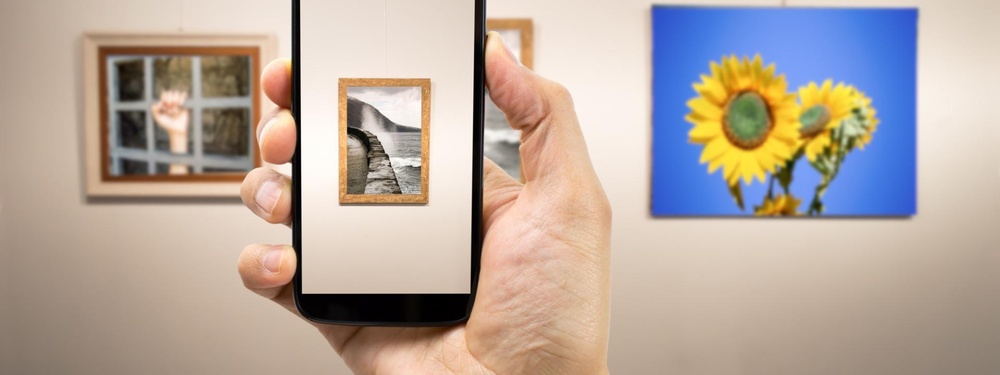3 things to understand about curation in learning

Part 1: A short history of digital curation
Digital curation and its use for bringing together internal and external resources to support learning is a widely accepted strategy employed by many L&D professionals. The origins of curation can be traced back to the start of human information recording, and since then we’ve been shifting, selecting, organising and presenting information to give it meaning, identify its relevance and clarify its context.
You may not have realised it, but even at the birth of the internet, curation was there from the very beginning.
The starting point
Tim Berners-Lee, (the inventor of the World Wide Web), included in his principle functions of the internet that is should:
- Allow anyone to access any type of document
- Allow everyone to disseminate their own documents
- Allow everyone to organise the entire collection of documents
The first two principles have been achieved through 24/7 access to the internet using mobile devices and the availability of mobile networks and Wi-Fi, and there are many web-based tools that allow anyone to share information over the internet.
The third principle is, however, trickier. It is not so easy to organise web-based digital content, or for that matter, to combine it with the vast amount of information that organisations and companies store on their networks.
Digital curation is the starting point for everyone to begin, as Berners-Lee intended, to take control of the vast amount of digital content available and organise it into meaningful collections.

Drinking from the fire hose
The inception of digital curation is said to have been the work of Robin Good who initially harnessed the idea of curation for social digital media marketing purposes, but quickly discovered that his ideas were relevant to many other industry sectors. Good’s work showed just how powerful digital curation could be for generating social engagement and discussion.
Good suggested that his curation strategy could be used an antidote to the growing concern that many people had about the vast amount of information generated on the web. This concern is linked to a sense of being overwhelmed, and has been described as being like trying to “drink from a fire hose”. Good describes information as constantly rushing past us in such volume that we find it more and more difficult to engage with it.
In his book “Here comes everybody”, Clay Shirky diagnosed that the problem was “not information overload, but filter failure”.
Many people were already using tagging (a key word or term assigned to a piece of information; also referred to as metadata), RSS feed (Rich Site Summary), which syndicates content from online published to subscribers, and other data tagging tools such as www.delicious.com to identify core content related to a topic, in order to make internet content easier to find. But Shirky’s research showed that this type of tagging was actually making the situation worse, as so much relevant information was identified, individuals didn’t feel able to pay attention to it all, and ended up not paying attention to it at all!
Nicholas Carr in his book “What the internet is doing to our brains” concluded that there are two types of information overload:
Situational Overload: Think of this as being like the needle in a haystack problem. You need a piece (the needle) of information quickly, and that piece you need is buried in a lot of other pieces of information (the haystack). Online search engines, filtering tools and human powered ones like email and Twitter can help in finding that needle of information we are looking for quite often,but not always. The problem is that many individuals don’t know how to use the search and filter tools in search engines and software applications effectively.
Ambient Overload: Think of this as not searching for a needle in a haystack of information, but instead being faced with a haystack sized pile of needles that you want to engage with. Many people I know, myself included, have experienced a keen sense of overload that occurs when we find alot of information that is of immediate interest. The Experience feels overwhelming particularly when combined with the never-ending pressure to keep up with it, take it all in, make sense of it, and harness it.
Ambient overload happens because there is so much information that we like and we want, and as the filters continue to get smarter they are providing us with more and more of what we want. Irritatingly, it is also often the case that the information we get is the same information repeated under different titles as it spreads across the web.
But the biggest problem with information is that it doesn’t arrive at convenient or regular times. It just comes all the time, and if you are not paying attention you run the risk of missing the really relevant information. Our use of the internet and social media has made many people feel that they must take notice of everything that flows towards them. The pressure to engage with it all results in an increased sense of overload, causing self-created stress, and addiction to web-connected devices.
"Think of this as not searching for a needle in a haystack of information, but instead being faced with a haystack sized pile of needles that you want to engage with."Curation: the intelligent filter
Good describes the search engine delivery of information as “fast food”, which is ok if you’re not too worried about the quality, but if you follow his analogy of food being information, when you are looking for a satisfying meal, the first thing you look for is the type of restaurant you want to go to and the quality of food you are after. Once inside, you may want to ask the waiting staff about the dishes, or better understand the dish of the day, to inform you selection of what to eat.
Good equates the choice of restaurant to a curation site or service, that offers the kind of quality you want, specific to your needs. The curator or chef of the curated information has filtered it giving you confidence that the information presented is of an appropriate quality and relevance, and has been made sense of for you, by emphasising a particular context or conditions that match your requirements.
Digital curation forms an intermediate layer between the search engine (or other sources of information) and the information consumer, to help when the search engine return is no longer enough. For learners, already overwhelmed by business information, good use of digital curation can help them find relevant and useful learning content easily, supporting them just in time, or just in case.
In part two of this series, I’ll be exploring the role of the curator and asking, what makes an effective digital curator?